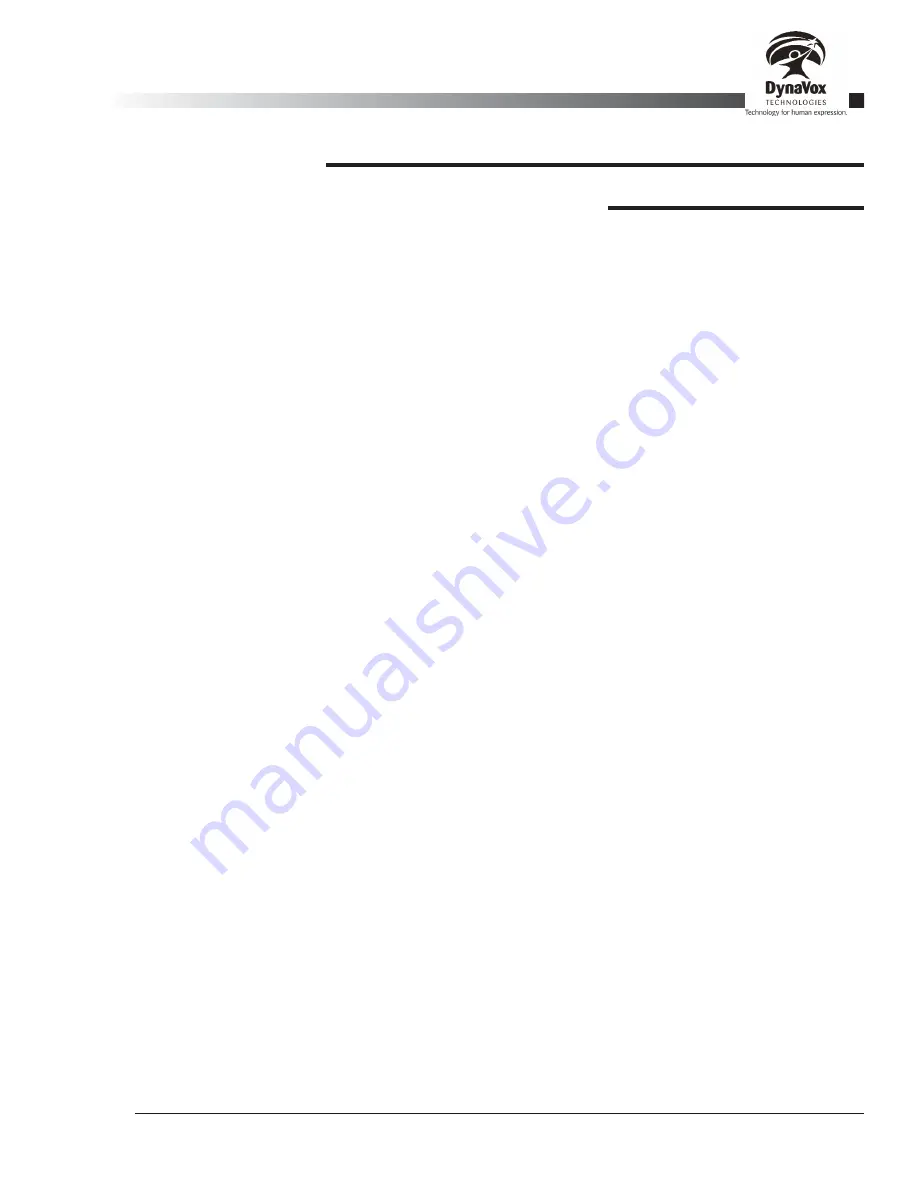
Palmtop3 User’s Guide
Part # 400670-A
65
Section 5: Creating and Editing
Configurations
5.1. Creating a New Symbol Configuration
Your Palmtop device provides a configuration editor that enables you to create new symbol-based and
phrase-based pages. If you are interested in adding phrase pages to an existing standard configuration, see
section 5.1.4.
To create a new configuration, select
File > Configurations > New Config
. The
New Configuration
dialog
will open. Type the name of the configuration in the
Configuration
box using the small onscreen keyboard or
an external keyboard.
Then select either
Symbol
or
Predict
from the
Template
drop-down menu. The only difference
between these two configuration templates is that the latter includes an onscreen keyboard with word
prediction, while the former has an onscreen keyboard without word prediction. You can change keyboards
later if necessary (see section 5.6).
After you have selected a name and template for your configuration, select
OK
. After a few seconds, you will
be asked to name the first page of the configuration in a new dialog. Page names provide a way to navigate
to different pages within the configuration. By default, the name "Page 1" will be assigned to the first page of
your new configuration. To give the page a more descriptive name (like "Food" or "Medical Care"), enter the
name in the
New Page Name
box.
You can also select the number of buttons that appear on a page using the
Page Type
drop-down menu. The
available grid sizes are
2x2
,
2x3 No Labels
,
3x3
,
3x4
,
3x4 Small Symbols
,
4x4
,
4x5
,
5x5
,
Scene 1
,
Scene 2
,
Scene 4
,
Scene 1+3
,
Scene 3+1
,
Schedule 8
,
Visual Rules 4
,
1x4 Phrase
,
2x6 Phrase
and
2x8 Phrase
. The
numbers represents the columns and rows, respectively. Most pages are designed for use with pictures and
icons, and have buttons which are more-or-less square. The
2x3 No Labels
configuration has buttons that
are too squat to include both text labels and symbols. The
Phrase
pages are designed for showing longer
text sentences, and have buttons which are much wider than they are tall (these buttons cannot display
symbols). The Scene pages have a row of small buttons along the top of the page, then larger buttons below
arranged in various ways. The
Schedule
page is for dividing tasks into before/after or first/next kinds of
sequences. Similarly, the
Visual Rules
page allows you to show a connection between a concept on the left
and right. Both the
Visual Rules
and
Schedule
pages include black lines or arrows between the buttons to
visually divide or link the buttons. Note that if your page background is black, you will not see those lines and
arrows. You can mix pages with different grid sizes in a single configuration.
After you have set the page name and type, select
OK
.
The Palmtop software will create your first page.
You will see a grid of blank buttons. To edit your new configuration, select
View > Go to Edit Mode
from the
menu bar. While you are in Edit Mode, a flashing red border will be visible around the edge of the
configuration. You can now add pictures and text to your buttons, move buttons around, change the colors
and fonts of the buttons, and add new pages (see sections 4.19 inclusive, 4.20 inclusive, 4.21 and 5.1.1).
When you are done editing a configuration, select
View > Go to Run Mode
to exit Edit Mode. If you
changed the configuration at all, you will be asked if you want to save the changes you made. If you select
Yes
, the configuration will be saved to the file you specified when you first created (or loaded) the
configuration. If you select
No
, the changes you made while in Edit Mode will remain, but the configuration
will not be saved to a file.
Summary of Contents for iChat3
Page 2: ...ii DynaVox Technologies ...
Page 4: ...iv DynaVox Technologies ...
Page 22: ...10 DynaVox Technologies ...
Page 86: ...74 DynaVox Technologies ...
Page 122: ...110 DynaVox Technologies ...






























